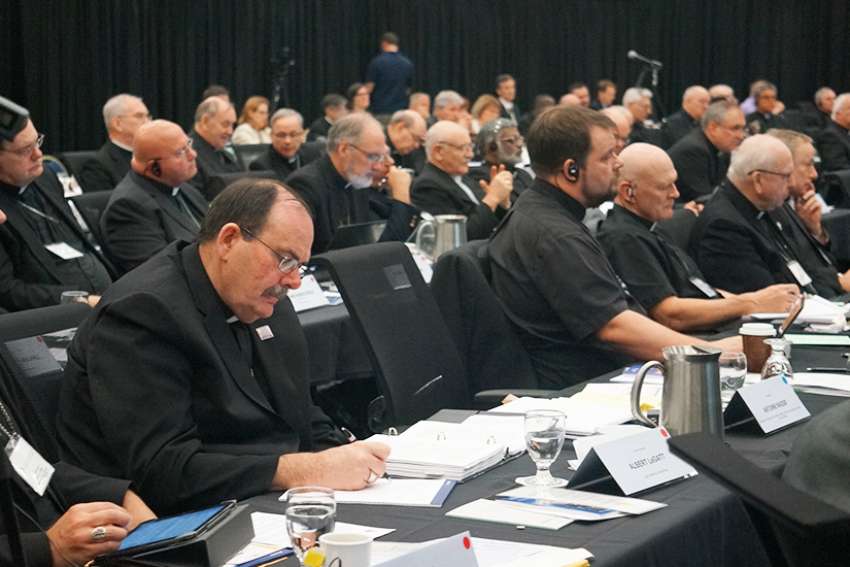More than 80 bishops and eparchs from across Canada pledged unanimously to implement sexual abuse document that has been six years in the making and is now set to be released.
That pledge is significant. Previous documents established guidelines but required no commitment from bishops to implement them. Now bishops across the country have pledged to enforce these new national standards.
“What we want is for the Catholic Church to be the safest place for young people,” said Bishop Lionel Gendron, president of the Canadian Conference of Catholic Bishops, speaking Sept. 28 after the close of the bishops’ annual plenary in Cornwall, Ont.
Titled “Protecting Minors from Sexual Abuse: A Call to the Catholic Faithful in Canada for Healing, Reconciliation, and Transformation,” the document has been under construction since 2011. It builds on the 1992 document “From Pain to Hope” that was updated in 2007, Gendron said.
Work on the document was essentially finished before the Church was rocked by recent sex-abuse scandals and cover ups in the United States, Europe, Asia and Australia. In June, American archbishop Theodore McCarrick resigned as a cardinal amid allegations of sexual misconduct. In August, a Pennsylvania grand jury report exposed decades of abuse involving more than 300 priests and 1,000 victims that was covered up by Church leaders.
Those scandals led American bishops to propose protocols, including the establishment of a third-party hotline to report abuse, to hold bishops more accountable. Similar protocols are absent from the Canadian document, but could be added in the future.
The document is “for today,” said Gendron. However, it is “already tomorrow, with all that’s happened with Pennsylvania and Cardinal McCarrick. We need people to accompany us and lead us to help us in the best we can to respond to these problems.”
The new guidelines focus on prevention, on “what shall we do so it will not happen again,” Gendron said. Its protocols are not only for “priests, bishops and deacons, but also for lay personnel and lay volunteers.”
The bishops established a permanent committee of bishops and specialists to “help the bishops to keep walking and responding in the best way possible to all these questions,” said Gendron. But the CCCB has no mechanism for dealing with a bishop accused of abusive or coercive behaviour, or covering up for abuse.
“If there is a complaint about a bishop, we call the nuncio (the Pope’s representative in Canada),” Gendron said. “Today that is what we would do.”
Gendron pointed out that the CCCB has no authority over its member bishops. That authority rests with the Pope.
“Even the president of the conference cannot discipline another bishop,” Gendron said.
Some theologians would like to give more power to bishops’ conferences and others would like to see less, he said. “This is a theological discussion. The problem is not only here in Canada, it’s a global problem,” said Gendron.
“I think that Rome will probably — I’m not sure how long it’s going to take — give some orientations in the near future.”
During the plenary the bishops heard the testimony of a victim of clerical sexual abuse. Deborah Kloos of the London, Ont., archdiocese told the bishops the abuse crisis has “not been handled properly and as a result many people suffered irreparable damage lasting them a lifetime.”
Kloos, who was abused as a teenager in the early 1980s by a parish priest, sent a copy of her speech to The Catholic Register.
“What you are doing now in addressing the crisis of clergy abuse takes courage,” she told the bishops. “I commend Cardinal (Sean) O’Malley of Boston for publicly apologizing for the way his office handled a 2015 letter containing allegations against Cardinal Theodore McCarrick.”
She described the sexual abuse crisis as an infected wound that cannot heal “unless it is opened up and can heal from the inside out.”
She urged transparency, honesty and holding people accountable so that the trust of victims can be restored. The abuse crisis, as the Pennsylvania grand jury report showed, has affected generations of victims and their families, she said, and keeps them away from “life-giving sacraments.”
“I believe that praying together for abuse survivors in our Church is one part of the healing process for survivors and the community of believers,” said Kloos, a registered nurse and artist.
Kloos said she felt great distress upon returning to Mass after a 20-year absence to discover that prayers for victims were never said during the liturgy. She urged all bishops to follow the example of Bishop Ronald Fabbro of London, who holds a diocesan-wide day of healing for abuse survivors on the Feast of Our Lady of Sorrows.
She also asked that clerical sexual abuse victims be remembered in the prayers of the faithful at every Mass.


